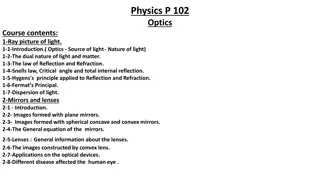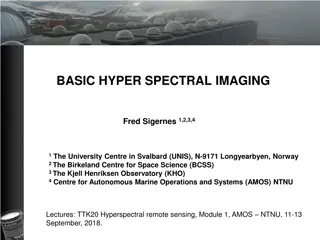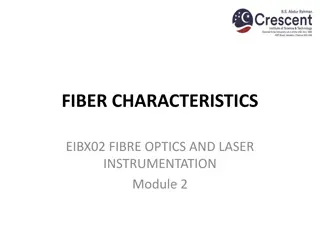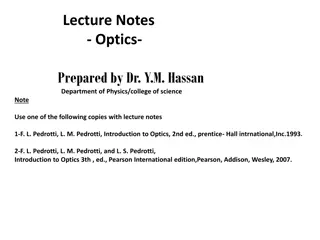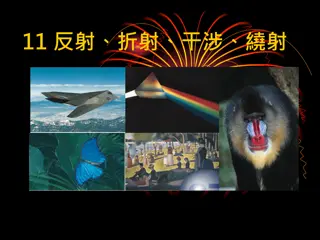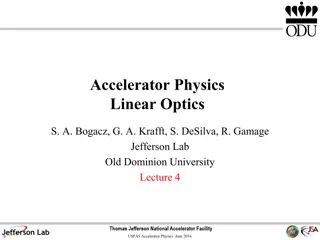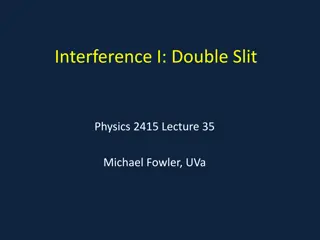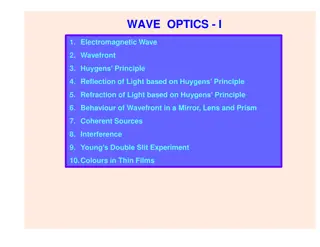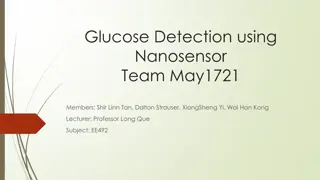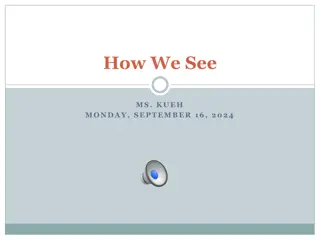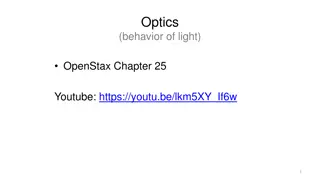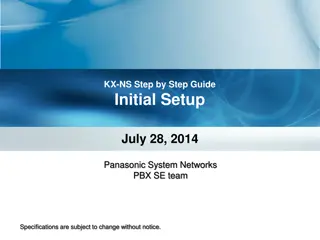Optics Spectrometer Setup at Rayat Shikshan Sanstha's Veer Wajekar A.S.C. College
Construction and setup guide for an optics spectrometer at Rayat Shikshan Sanstha's Veer Wajekar A.S.C. College, including details on the telescope, collimator, and prism table. Instructions cover aligning the telescope, setting up the collimator, and positioning the spectrometer table. Steps are provided for focusing the spectrometer for parallel light and making necessary adjustments.
Download Presentation

Please find below an Image/Link to download the presentation.
The content on the website is provided AS IS for your information and personal use only. It may not be sold, licensed, or shared on other websites without obtaining consent from the author.If you encounter any issues during the download, it is possible that the publisher has removed the file from their server.
You are allowed to download the files provided on this website for personal or commercial use, subject to the condition that they are used lawfully. All files are the property of their respective owners.
The content on the website is provided AS IS for your information and personal use only. It may not be sold, licensed, or shared on other websites without obtaining consent from the author.
E N D
Presentation Transcript
Rayat Shikshan Sansthas Veer Wajekar A.S.C. College,Phunde Department of Physics Prof. Ghorpade U. T. Topic OPTICS-SPECTROMETER
Construction Main three parts: Telescope Collimator Prism table
Telescope Setup: While looking through the telescope, slide the eyepiece in and out until the cross- hairs come into sharp focus. Loosen the graticule lock ring, and rotate the graticule until one of the cross-hairs is vertical. Retighten the lock ring and then refocus if necessary. Position the spectrometer so that the telescope can be pointing at some distant object (e.g. building outside the window). View the distant object through the telescope and turn the focus knob until the image is sharp. The telescope is now focussed for parallel light rays. 3. Position the mercury discharge lamp close to the slit at the end of the collimator. Turn on the mercury discharge lamp. Figure 5: Align the Telescope directly opposite the Collimator.
Collimator Setup: Check that the collimator slit is partially open (use the slit width adjust screw). Align the telescope directly opposite the collimator as shown in Figure 5. Looking through the telescope, adjust the focus of the collimator and, if necessary, the rotation of the telescope until the slit comes into sharp focus. DO NOT change the focus of the telescope. Adjust the slit width until the image of the slit as seen through the telescope is sharply focused on the cross-wires. If the slit is not vertical, loosen the slit lock ring, realign the slit, and retighten the lock ring. The collimator is then set to produce parallel light from the slit.
Spectrometer Table Setup: Place the prism at the center of the spectrometer table so that one of the refracting faces (say XY ) is approximately perpendicular to a line joining two leveling screws 1 and 2 of the spectrometer table. Adjust the height of the spectrometer table until the collimator is centered on the vertical dimension of the prism. Rotate the spectrometer table and telescope until a refracted slit image is observed. If the image is not in the center of the eld of view, the refracting edge of the prism is not parallel to the axis of rotation of the telescope and the spectrometer table will need to be leveled. Rotate the spectrometer table and telescope so that a reected slit image can be observed from face XY . Adjust leveling screw 2 until the reected slit image is in the center of the eld of view. Rotate the spectrometer (but not the telescope) so that a reected slit image can be observed from face Y Z. Adjust leveling screw 3 until the reected slit image is in the center of the eld of view.
Adjustments Focusing the spectrometer for parallel light. Setting of table. Schuster s method.
Angle of Prism Measurement of the Prism Angle . *Rotate the spectrometer table until the refracting edge of the prism is approximately pointing towards the collimator as in Figure 8. Light from the collimator will be reected from both sides of the prism (ZX and ZY ). *Rotate the telescope to one side to receive the light which is reected from the face ZX of the prism. Carefully position the telescope until the slit image is centered on the cross-wires. Record the angular position of the telescope as 1 in Data Table 1. *Rotate the telescope around to receive light reected o the other face ZY of the prism and record the angular position of the telescope as 2 in Data Table 1. *Rotate the spectrometer table slightly by a few degrees. *Repeat the above steps *FOUR more times to have a total of FIVE trials in estimating the prism angle .
Angle of minimum Deviation Place the prism on a prism table in such a way that light falls on one of the reflecting side of a prism. The image of slit after refraction through the prism is observed through the telescope. Adjust the telescope such that image is stable even though prism table is moved continuously in the same direction. Adjust the cross wire of the telescope on the stable image. Record the spectrometer first reading at this position. Now remove the prism from the prism table and observe the direct image of the slit through the telescope and record the second reading. Difference of first & second reading gives the angle of minimum deviation m. Knowing , m, one can obtain R.I. of prism using equation, =(sin( + m/2))/sin( /2)
Note: To read the angle, first find where the zero point of the vernier scale aligns with the degree plate and record the value. In Figure 7, the zero point on the vernier scale is between the 155 and 155 30 marks on the degree plate, so the recorded value is 155 . Now find the line on the vernier scale that aligns most closely with any line on the degree scale. In the figure, this is the line corresponding to a measurement of 15 minutes of arc. Add this value to the reading recorded above to get the correct measurement, i.e., 155 + 15 = 155 15 .


